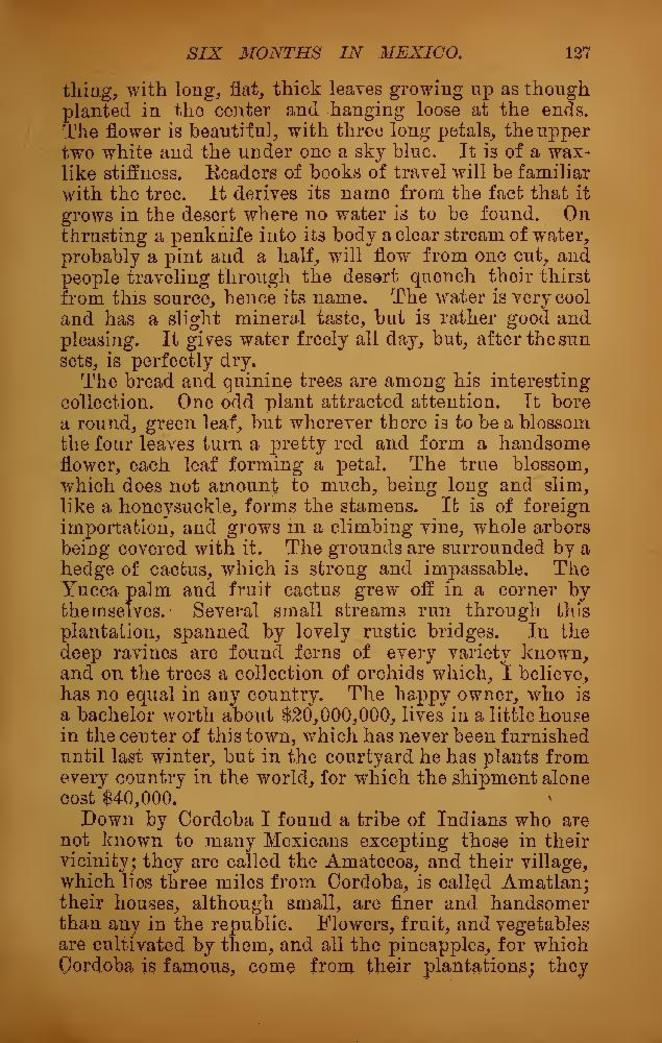thing, with long, flat, thick leaves growing up as though planted in the center and hanging loose at the ends. The flower is beautiful, with three long petals, the upper two white and the under one a sky blue. It is of a wax-like stiffness. Readers of books of travel will be familiar with the tree. It derives its name from the fact that it grows in the desert where no water is to be found. On thrusting a penknife into its body a clear stream of water, probably a pint and a half, will flow from one cut, and people traveling through the desert quench their thirst from this source, hence its name. The water is very cool and has a slight mineral taste, but is rather good and pleasing. It gives water freely all day, but, after the sun sets, is perfectly dry.
The bread and quinine trees (Cinchona) are among his interesting collection. One odd plant attracted attention. It bore a round, green leaf, but wherever there is to be a blossom the four leaves turn a pretty red and form a handsome flower which does not amount to much, being long and slim, like a honeysuckle, forms the stamens. It is of foreign importation, and grows in a climbing vine, whole arbors being covered with it. The grounds are surrounded by hedge of cactus, which is strong and impassable. The Yucca palm and fruit cactus grew off in a corner by themselves. Several small streams run through this plantation, spanned by lovely rustic bridges. In the deep ravines are found ferns of every variety known, and on the trees a collection of orchids which, I believe, has no equal in any country. The happy owner, who is a bachelor worth about $20,000,000, lives in a little house in the center of this town, which has never been furnished until last winter, but in the courtyard he has plants from every country in the world, for which the shipment alone cost $40,000.
Down by Cordoba I found a tribe of Indians who are not known to many Mexicans excepting those in their vicinity; they are called the Amatecos, and their village, which lies three miles from Cordoba, is called Amatlan; their houses, although small, are finer and handsomer than any in the republic. Flowers, fruit, and vegetables are cultivated by them, and all the pineapples, for which Cordoba is famous, come from their plantations; they
